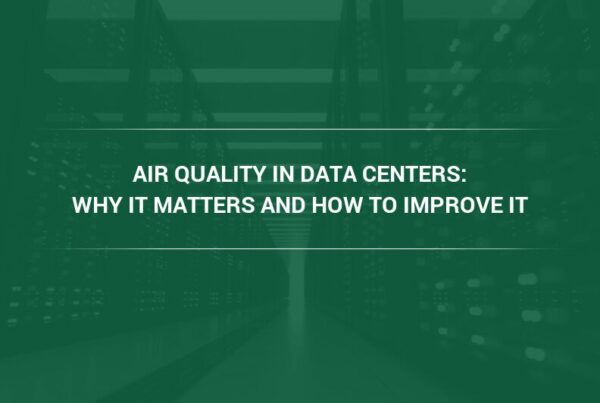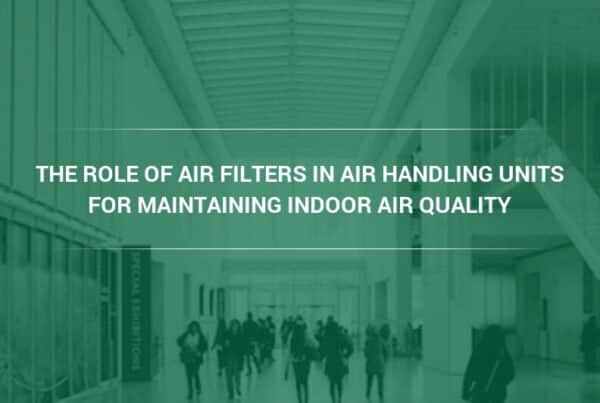As studies show the importance of indoor air quality in healthcare facilities, learn what hospitals and clinics need from quality air filter manufacturers.
Indoor air pollution is recognized as a serious health risk, but perhaps nowhere more important than in healthcare facilities such as hospitals, outpatient surgical centers, nursing homes, and dental clinics. In recent years, working to improve indoor air quality has emerged as a priority in the healthcare industry.
Air quality is a critical, but often invisible aspect of creating a healthy indoor environment. Poor air quality has been linked to a wide variety of negative health outcomes, from respiratory issues like allergies and asthma to nosocomial infections which is defined as (i.e. infections not present during the patient’s admission. In other words, improving air quality not only helps people suffering from existing health conditions, but it also helps prevent any further symptoms in patients.
“Many public hospitals were constructed years ago when HVAC technology was not as highly advanced as today. Practically every single piece of equipment that moves air in and out of a healthcare facility has undergone a transformation since then. As a result, the air drawn into older facilities or those that have not been upgraded, may not be treated the same as those benefiting from the more advanced equipment and engineering available today.” explains David Blackwell, Director of Healthcare for Camfil USA.
What Causes Poor Air Quality in Hospitals
The contaminants that cause air quality concerns in healthcare facilities are generally from two sources. First, there’s contaminants that come from the outside environment typically found in crowded urban areas such as car exhaust, nearby industrial facilities, power plants, and general smog. Hospitals are also in rural agricultural areas which have their own unique sources of contaminants from fields of crops or herds of cattle for example.
The second source is from internally generated contaminants. The constant movement of people and equipment is always present in a hospital. Housekeeping crews move rapidly from room to room using various chemicals and cleaning agents in each. Internal laundry services wash and dry tons of sheets and blankets daily. Food service prepares and delivers meals throughout the entire building. The process of removing supplies used in ORs, such as tubing or packaging from single use instruments, and prepping the room for the next procedure is a major undertaking. Of course the patients themselves are an obvious source of contaminants through coughing or sneezing which can introduce pathogens into the airstream.
Can Air Filters Help Reduce Contaminants from Both Sources?
The short answer is yes. The longer answer is a bit more complicated. Contaminants from both outside and inside sources can be broken into two separate categories.
The first would be particulate matter which the EPA defines as either a solid or liquid particles suspended in the airstream. The pollen from plants outside the hospital, dirt spread into the air from shaking blankets or mucus from a sneeze are examples.
Particulate air filters are designed to capture a certain percentage of particles in various sizes. A filter rated as a MERV 14/14A filter for example, should remove 75% of all particles larger than 0.3 microns while a MERV 16/16A should remove much more; 95%. HEPA filters are used to capture even more of the smallest particles; up to 99.99% of all particles greater than 0.3 microns.
The other category of contaminants which are of concern in a healthcare facility is gases or vapors. These are introduced into the airstream from many sources such as fumes from an idling ambulance, cleaning agents or other sterilizing chemicals and unwanted viruses from sick patients.
These gases and vapors are controlled by molecular filters which are sometimes referred to as activated carbon filters. The molecules that make up these dangerous or unpleasant vapors are up to 10,000 times smaller than particles and are controlled through a process known as adsorption.
“Healthcare facilities and design engineers look to ASHRAE Standard 170 as a guideline when evaluating how to filter the air for different spaces within the hospital.” says Blackwell. “Particulate air filters are well established in healthcare but we still work to raise the bar with regards to air quality as technology improves these filters over time. Molecular filters to control dangerous vapors are becoming more and more of a topic as we understand further about the effects of inhaling these gases.”
Improving Indoor Air Quality in Hospitals Also Saves Money
Improving indoor air quality is also a surefire way to save money. According to one study conducted in California, researchers found that improving air quality would allow hospitals in the state to save as much as $193,100,184 over a two-year period between 2005-2007.
Look for Air Filter Manufacturers with Healthcare Experience
If you are looking for commercial air filtration systems for hospitals, clinics, laboratories, and other healthcare facilities, it’s important to work with air filter manufacturers and distributors with experience in this niche. For more than 50 years, Camfil USA has designed and built air filtration systems for hospitals and healthcare facilities around the world. Talk to our team today to learn more about our line of air filters for hospitals and healthcare facilities.



